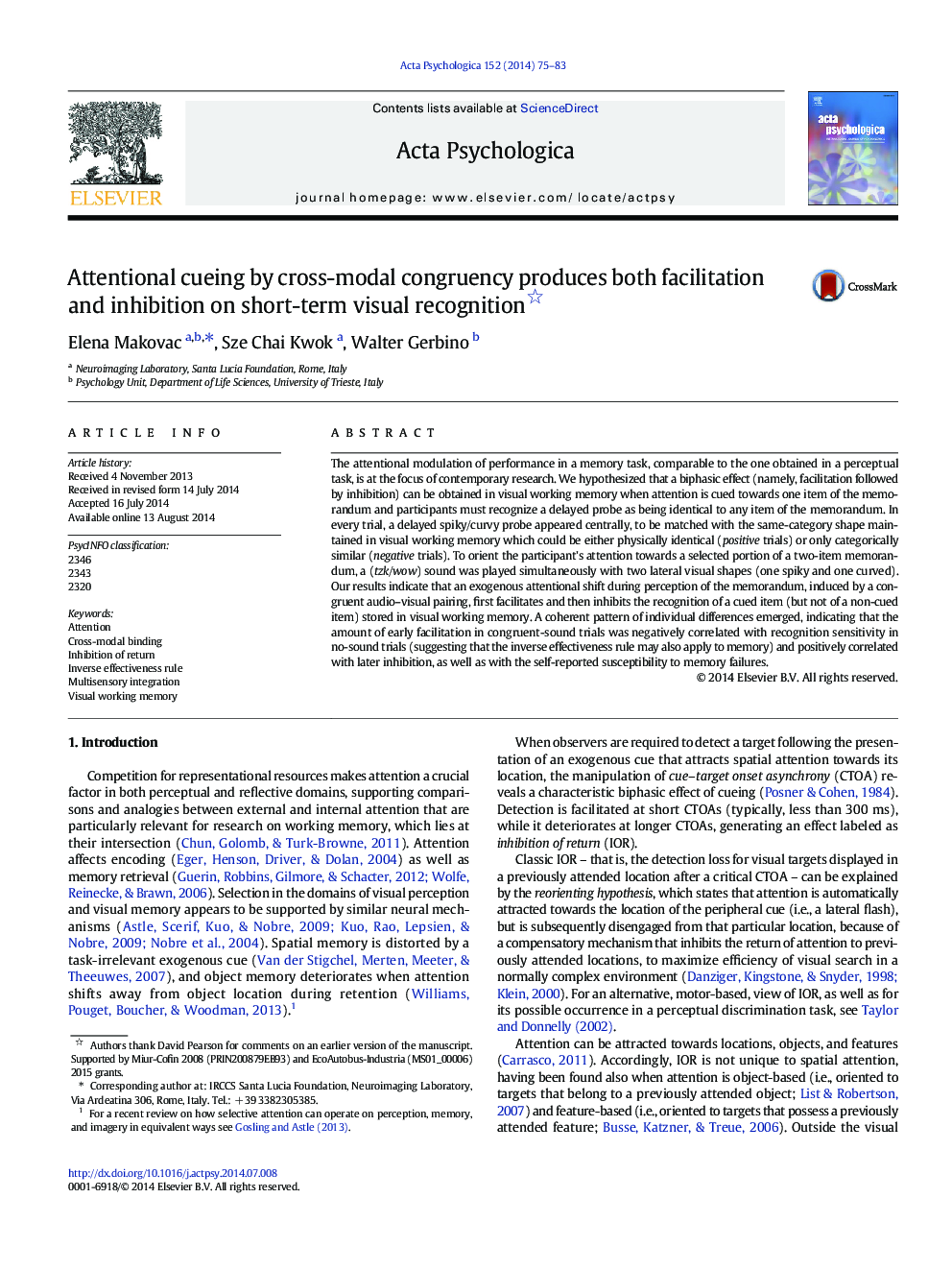| Article ID | Journal | Published Year | Pages | File Type |
|---|---|---|---|---|
| 919788 | Acta Psychologica | 2014 | 9 Pages |
•Cross-modal congruency captures attention and affects visual working memory (VWM).•Recognition of the shape cued by a congruent sound is facilitated after 150 ms.•After 1150 ms recognition suffers from inhibition of return (IOR).•The amount of IOR is proportional to the amount of initial facilitation.•The inverse effectiveness rule of multisensory integration holds also in VWM.
The attentional modulation of performance in a memory task, comparable to the one obtained in a perceptual task, is at the focus of contemporary research. We hypothesized that a biphasic effect (namely, facilitation followed by inhibition) can be obtained in visual working memory when attention is cued towards one item of the memorandum and participants must recognize a delayed probe as being identical to any item of the memorandum. In every trial, a delayed spiky/curvy probe appeared centrally, to be matched with the same-category shape maintained in visual working memory which could be either physically identical (positive trials) or only categorically similar (negative trials). To orient the participant's attention towards a selected portion of a two-item memorandum, a (tzk/wow) sound was played simultaneously with two lateral visual shapes (one spiky and one curved). Our results indicate that an exogenous attentional shift during perception of the memorandum, induced by a congruent audio–visual pairing, first facilitates and then inhibits the recognition of a cued item (but not of a non-cued item) stored in visual working memory. A coherent pattern of individual differences emerged, indicating that the amount of early facilitation in congruent-sound trials was negatively correlated with recognition sensitivity in no-sound trials (suggesting that the inverse effectiveness rule may also apply to memory) and positively correlated with later inhibition, as well as with the self-reported susceptibility to memory failures.
